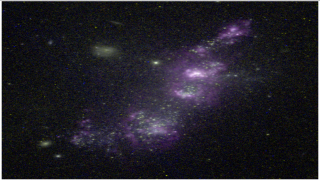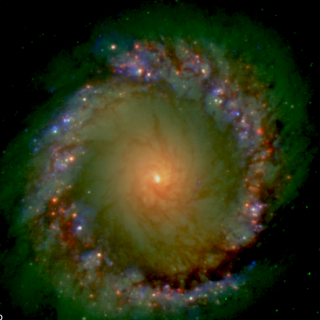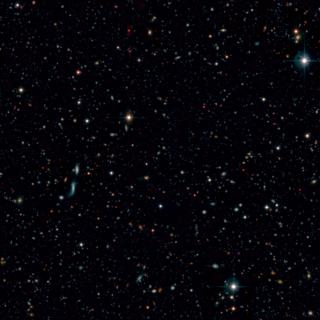Bibcode
Rodríguez-Eugenio, N.; Pérez-García, A. M.; Alonso-Herrero, A.; Acosta-Pulido, J. A.; Rodríguez-Espinosa, J. M.; Ramos-Almeida, C.
Referencia bibliográfica
Monthly Notices of the Royal Astronomical Society, Volume 429, Issue 4, p.3449-3471
Fecha de publicación:
3
2013
Número de citas
13
Número de citas referidas
11
Descripción
We present near-infrared (NIR) spectroscopic observations of 28 X-ray
and mid-infrared selected sources at a median redshift of z ˜ 0.8
in the Extended Groth Strip (EGS). To date this is the largest
compilation of NIR spectra of active galactic nuclei (AGN) at this
redshift. The data were obtained using the multi-object spectroscopic
mode of the Long-slit Intermediate Resolution Infrared Spectrograph
(LIRIS) at the 4.2 m William Herschel Telescope (WHT). These galaxies
are representative of a larger sample studied in a previous work,
consisting of over a hundred X-ray selected sources with mid-infrared
counterparts, which were classified either as AGN dominated or host
galaxy dominated, depending on the shape of their spectral energy
distributions (SEDs). Here, we present new NIR spectra of 13 and 15
sources of each class, respectively. We detect the Hα line at
≥1.5σ above the continuum for the majority of the galaxies.
Using attenuation-corrected Hα luminosities and observed
Spitzer/MIPS 24 μm fluxes, and after subtracting an AGN component
estimated using an AGN empirical correlation and multifrequency SED
fits, we obtain average star formation rates (SFRs) of 7 ± 7 and
20 ± 50 M&sun; yr-1, respectively (median
SFRs = 7 and 5 M&sun; yr-1). These values are
lower than the SFRs reported in the literature for different samples of
non-active star-forming galaxies of similar stellar masses and redshifts
(M* ˜ 1011 M&sun; and z ˜
1). In spite of the small size of the sample studied here, as well as
the uncertainty affecting the AGN-corrected SFRs, we speculate with the
possibility of AGN quenching the star formation in galaxies at z ˜
0.8. Alternatively, we might be seeing a delay between the offset of the
star formation and AGN activity, as observed in the local Universe.
Proyectos relacionados

Grupo de Estudios de Formación Estelar GEFE
El proyecto interno GEFE está enmarcado en el proyecto coordinado, ESTALLIDOS, financiado por el plan nacional desde el año 2001. El ultimo proyecto aprobado es ESTALLIDOS 6.0 (AYA2016- 79724-C4-2-P). En el proyecto GEFE trabajamos en base al caso científico del proyecto ESTALLIDOS 6.0. Los estallidos de formación estelar (Starbursts o SB) son
Casiana
Muñoz Tuñón

Centros de Galaxias a Escalas de Parsecs y Técnicas de Alta Resolución Espacial
Proyecto enfocado al estudio en el IR del núcleo de las galaxias más cercanas con resoluciones espaciales en el rango de 1 a 10 pc. Estas resoluciones espaciales, accesibles con los grandes telescopios de tierra usando técnicas frontera de observación, son por primera vez comparables a las que se obtienen rutinariamente con HST en el óptico y VLBI
Almudena
Prieto Escudero

Evolución de Galaxias
El estudio de la evolución de las galaxias es un tema crucial de la Astronomía Extragaláctica moderna. Permite vincular las galaxias locales con las primeras que existieron en el universo. Pero para poder abordarlo es preciso obtener censos estadísticamente significativos de galaxias de distintas luminosidades, a distintas distancias
Jorge
Cepa Nogue